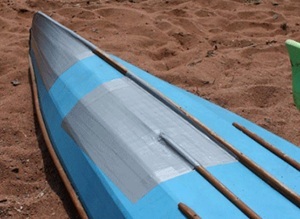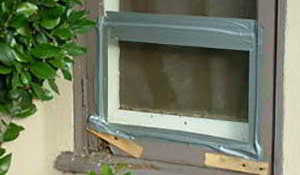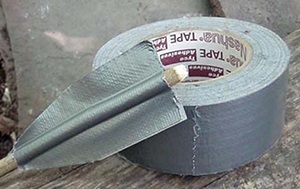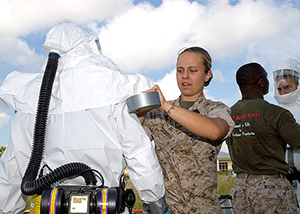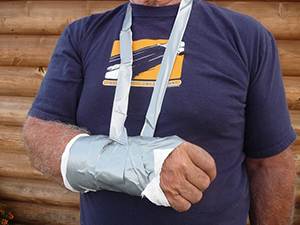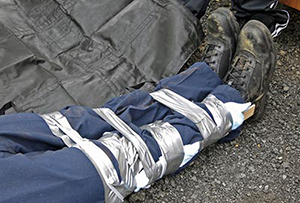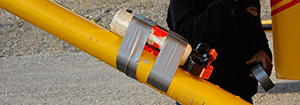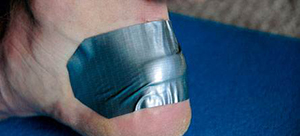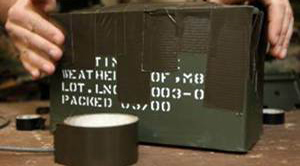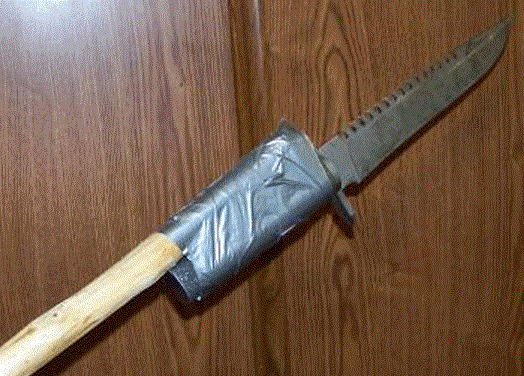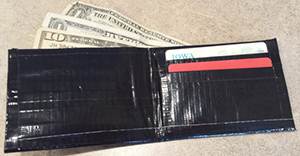Survivalism: 26 Practical Survival Uses for Duct Tape
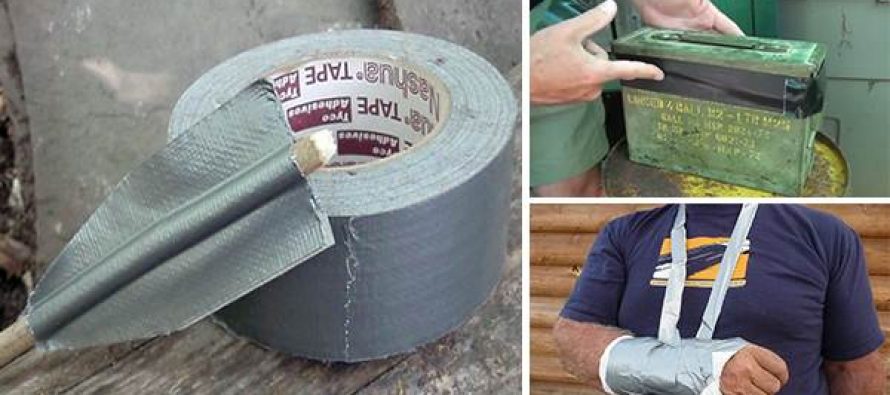
Duct tape is one of those tools that has so many uses. From
removing warts to creating a carbon-dioxide scrubber to holding almost
anything together, duct tape’s uses are universal. Not surprisingly,
duct tape has many potential uses in emergencies and is a mainstay for
any survival kit. No wonder most preppers have at least a few duct tape
roles in their survival gear.
Here are 26 ways duct tape can be used in survival situations:
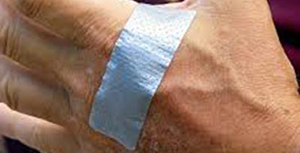
Duct tape can be used to make any number of bandages, including butterfly sutures. For major or larger wounds, place a clean piece of gauze or dressing on the sticky side of a piece of duct tape and place the duct tape bandage over the wound. For injuries that require holding the wound closed, cut two small strips of duct tape and place it perpendicular to the direction of the wound.
For light duty work, this will probably be strong enough.
For heavier applications, make three pieces of duct tape rope, then braid them together.
Duct tape can be used anywhere you might use caulk or weatherstripping.
Related: How To Make a Glass Arrowhead
Picture – >>> Duct tape used to seal decontamination suits.
Related: Camouflage and Concealment: The Art of Staying Hidden
Just be sure to place some soft cloth or gauze around the injured area first, so the duct tape isn’t directly touching the skin.
Related: 22 Ingenious Hacks to Make Food Last Longer

Duct tape has a soft, silvery sheen that can provide a partially reflective surface to catch the attention of search and rescue operators. You can also use duct tape to spell out an emergency message like “S O S” that can be seen from the air or from far away. Read more: 10 Ways to signal SOS

To help reduce the risk of injury from shards of glass, you can place duct tape in a criss-cross star pattern over a pane of glass. If the window breaks, the duct tape will help hold the pieces of glass together. Alternatively, duct tape can also reinforce and hold pieces of glass that are already broken.

Duct tape burns very well and serves as a nice substitute for char cloth. Just strip a piece of duct tape into as many thin strips as possible and ball it together to create the classic “bird’s nest ball” of tinder which can burn for a few minutes.
Related: How to Make Firebricks (fire logs) and Wood Stove Logs for Free!
That’s how the Greatest Generation did it and it worked out pretty well.
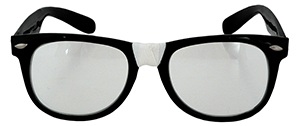
Remember those dorky characters from TV or the movies who wore glasses held together with duct tape? You can do that too if you have to hold broken glasses together. It won’t look good, but it’ll work.
This can provide a great standoff weapon when things get tough.
Related: Would You be Able to Leave Someone Behind?

Duct tape is ideal for makeshift repairs on your vehicle. From holding parts together to covering up holes or cracks, duct tape is perfectly capable. This should come as no surprise since the crew of Apollo 17 used duct tape to repair their moon rover.
Related: Top 10 Vehicles for Your EMP Survival
Here are 26 ways duct tape can be used in survival situations:
#1: Bandages

Duct tape can be used to make any number of bandages, including butterfly sutures. For major or larger wounds, place a clean piece of gauze or dressing on the sticky side of a piece of duct tape and place the duct tape bandage over the wound. For injuries that require holding the wound closed, cut two small strips of duct tape and place it perpendicular to the direction of the wound.
#2: Plug a leak in a small boat or canoe
Because of duct tape’s waterproof nature, it can be placed over a small crack or hole in a boat to make it useable. The trick is to clean the hull’s surface very well so the duct tape can adhere to the hull as strongly as possible. Also, place the duct tape on the inside and outside of the hull to provide the strongest patch.#3: Rope substitute
Take a piece of duct that’s long enough to fulfill your rope needs. Then twist it so it becomes a small rope.For light duty work, this will probably be strong enough.
For heavier applications, make three pieces of duct tape rope, then braid them together.
#4: Weatherstripping
Duct tape is an excellent way of sealing openings from water or air flow.Duct tape can be used anywhere you might use caulk or weatherstripping.
#5: Flagging tape substitute
Instead of leaving a trail of breadcrumbs or spray-painting tree trunks, wrap some duct tape around a tree or a bush around eye level. While not the most reflective or colorful marker, it will stand out against a natural setting.#6: Arrow fletching
If you’re really roughing it to the point where making your own arrows is par for the course, two pieces of duct tape stuck together and cut to shape can substitute for feathers and provide the aerodynamic stability needed to make a reasonably accurate arrow.Related: How To Make a Glass Arrowhead
#7: Sealing openings in clothing
Duct tape can be wrapped around joints in your clothing, such where your boots meet your pants or gloves meet your sleeves, in order to seal them from the elements, chemicals or bugs.Picture – >>> Duct tape used to seal decontamination suits.
#8: Camouflage
No, the duct tape itself won’t serve as camouflage, but wrapping it around your body, sticky side out, can make it possible to place leaves, dirt, moss and small sticks against your clothing to help break up your body’s outline.Related: Camouflage and Concealment: The Art of Staying Hidden
#9: Make a cast
While not a substitute for a properly set cast, duct tape wrapped around an injured extremity can help stabilize any broken bones or sprained joints.Just be sure to place some soft cloth or gauze around the injured area first, so the duct tape isn’t directly touching the skin.
#10: Pluck feathers
If getting ready to cook a bird for food, duct tape can help make removing the feathers a little easier. Duct tape is especially suited for plucking feathers from a duck!#11: Seal food containers and packaging
Plastic bags and other containers can be resealed with duct tape to keep air and water out. Duct tape won’t seal as well as the original packaging, but it can help keep food fresher, longer.Related: 22 Ingenious Hacks to Make Food Last Longer
#12: Signaling device

Duct tape has a soft, silvery sheen that can provide a partially reflective surface to catch the attention of search and rescue operators. You can also use duct tape to spell out an emergency message like “S O S” that can be seen from the air or from far away. Read more: 10 Ways to signal SOS
#13: Attach a splint
Secure and stabilize a broken or sprained leg or ankle with two sturdy sticks and duct tape. One thing to keep in mind is that you should avoid having the duct tape or sticks come into direct contact with skin, as it can be very uncomfortable.#14: Snow goggles
Layer several pieces of duct tape to create a sturdy “ribbon.”. Measure how far apart your eyes are and cut two very narrow rectangles in the ribbon to create slits that line up with your eyes. Place the ribbon over your eyes as if you’re Zorro, Robin or the Lone Ranger and hold the ribbon to your head with, you guessed it, more duct tape.#15: Secure window glass

To help reduce the risk of injury from shards of glass, you can place duct tape in a criss-cross star pattern over a pane of glass. If the window breaks, the duct tape will help hold the pieces of glass together. Alternatively, duct tape can also reinforce and hold pieces of glass that are already broken.
#16: Firestarter

Duct tape burns very well and serves as a nice substitute for char cloth. Just strip a piece of duct tape into as many thin strips as possible and ball it together to create the classic “bird’s nest ball” of tinder which can burn for a few minutes.
Related: How to Make Firebricks (fire logs) and Wood Stove Logs for Free!
#17: Lashing
When rope is unavailable, duct tape can usually be used for lashing objects securely together.#18: Help avoid blisters
For areas of skin that are prone to getting blisters, such as the bottom of your foot or heel, proactively place a piece of duct tape over the affected area to provide an extra layer of protection from blister-causing fiction.#19: Ankle or wrist brace
If no ACE or similar medical bandage is available, you can use duct tape placed over a layer of cloth to create an ankle or wrist brace. Avoid wrapping the tape too tightly and use enough to provide some moderate resistance to reduce the movement in the joint.#20: Seal ammo boxes
One of duct tape’s original uses was to waterproof ammo boxes during World War II.That’s how the Greatest Generation did it and it worked out pretty well.
#21: Repair glasses

Remember those dorky characters from TV or the movies who wore glasses held together with duct tape? You can do that too if you have to hold broken glasses together. It won’t look good, but it’ll work.
#22: Fly tape
Take a two foot strip of duct tape and cut it lengthwise so it’s about 1 inch in width. Stick one end in at an elevated point, like a door jamb or overhead branch and the bottom end to a weight, like a small rock. It won’t work as well as real fly tape, but it is chemical and odor free and won’t attract unwanted attention.#23: Make a spear
If you attach your survival knife to the end of a pole or stick with liberal use of duct tape to keep it from shifting, you have yourself a spear.This can provide a great standoff weapon when things get tough.
Related: Would You be Able to Leave Someone Behind?
#24: Restraints
Duct tape can be placed around an individual’s ankles and/or wrists to keep them restrained. The need to restrain another person is probably not likely in a survival situation, but it’s a possibility. After all, it’s unlikely that the average survival kit will have handcuffs.#25: Vehicle repairs

Duct tape is ideal for makeshift repairs on your vehicle. From holding parts together to covering up holes or cracks, duct tape is perfectly capable. This should come as no surprise since the crew of Apollo 17 used duct tape to repair their moon rover.
Related: Top 10 Vehicles for Your EMP Survival
#26 Make a Wallet
Everybody needs a wallet, right? If you have a taste for the unconventional, or you’re simply a stubborn do-it-yourselfer, then whip out that roll of duct tape and make your own wallet!Skills Needed in a Survival Group

Do you know what skill sets you have accumulated within your survival family? Think about it for a minute. What does each person bring to the survival group that is beneficial and needed in some way or another?
These are thoughts that have been in my mind for a few weeks now. So I sat down and did some research and put together a list of skill sets that are almost a must have for any group. One of the great things about this list is you can mark off what you have mastered and pick something else to work on. In doing this you become multi-beneficial to the group which is fantastic. Not only would you have the skill sets but you can teach the children.
Below are a few things to consider adding to your group or personal skills:
- Perimeter Security
- Plant Identification
- Gardening Skills (includes winter gardening, herbs)
- Butchering Skills (includes salting, smoking and curing meat)
- Food Preservation (canning, drying, dehydrating, smoking, grains)
- Raising Livestock (Chickens, ducks, rabbits, goats, pigs)
- Hunting/Fishing
- Medical Skills/Dental Skills
- Electrical Knowledge
- Carpentry
- Plumbing
- Welding
- Sign Language
- Mechanical Skills (cars, appliances, lawn equipment etc.)
- HAM Radio Skills
- Bee Keeping
- Candle Making
- Sewing Skills (Clothes & Blankets)
- Soap Making
- Shoe Making
- Baking Bread
- Churning Butter
- Charcoal Making
- Martial Arts
- Marksmanship/Weapons
- Brick Making
- Tool Making
